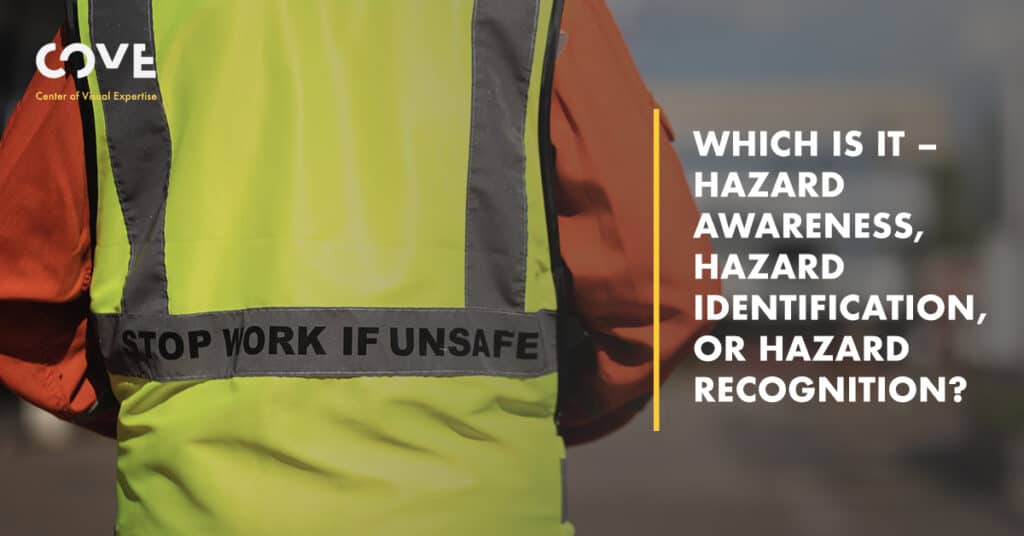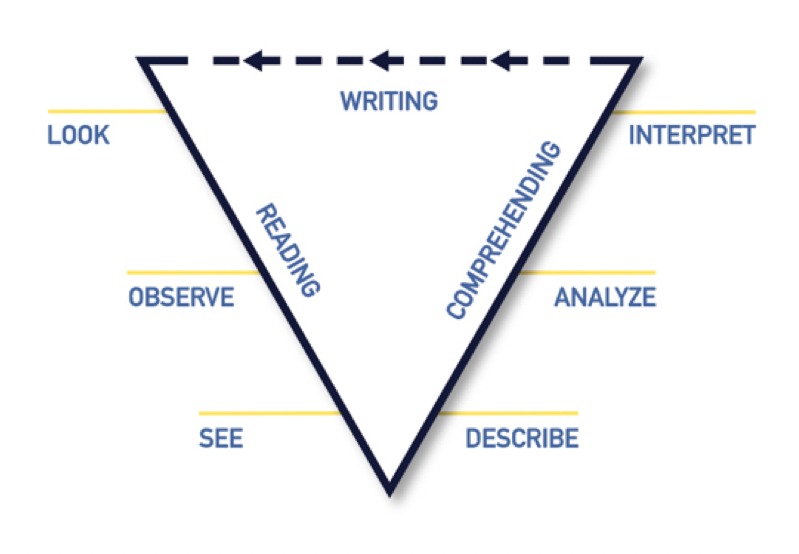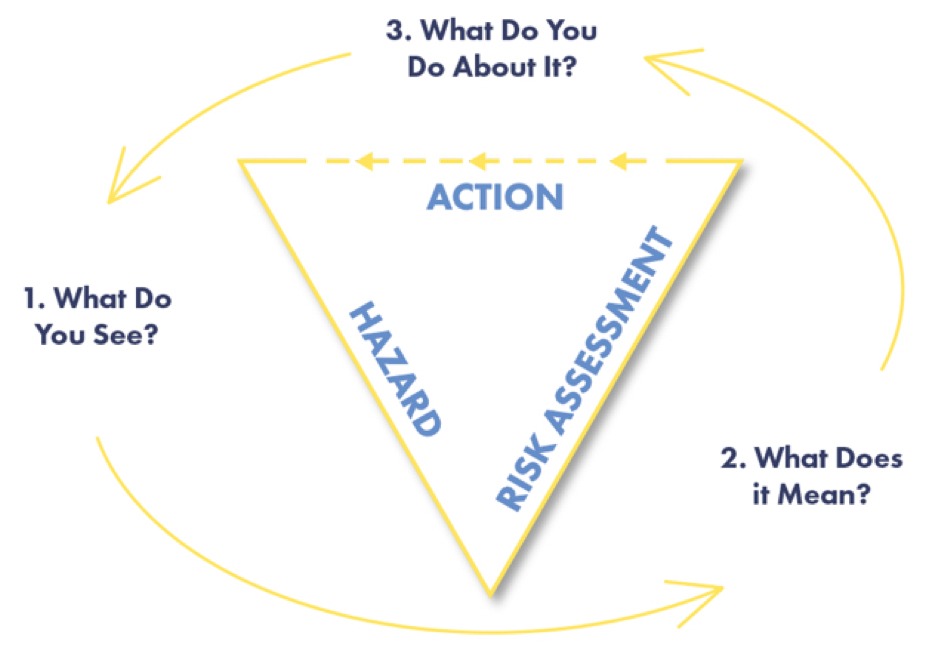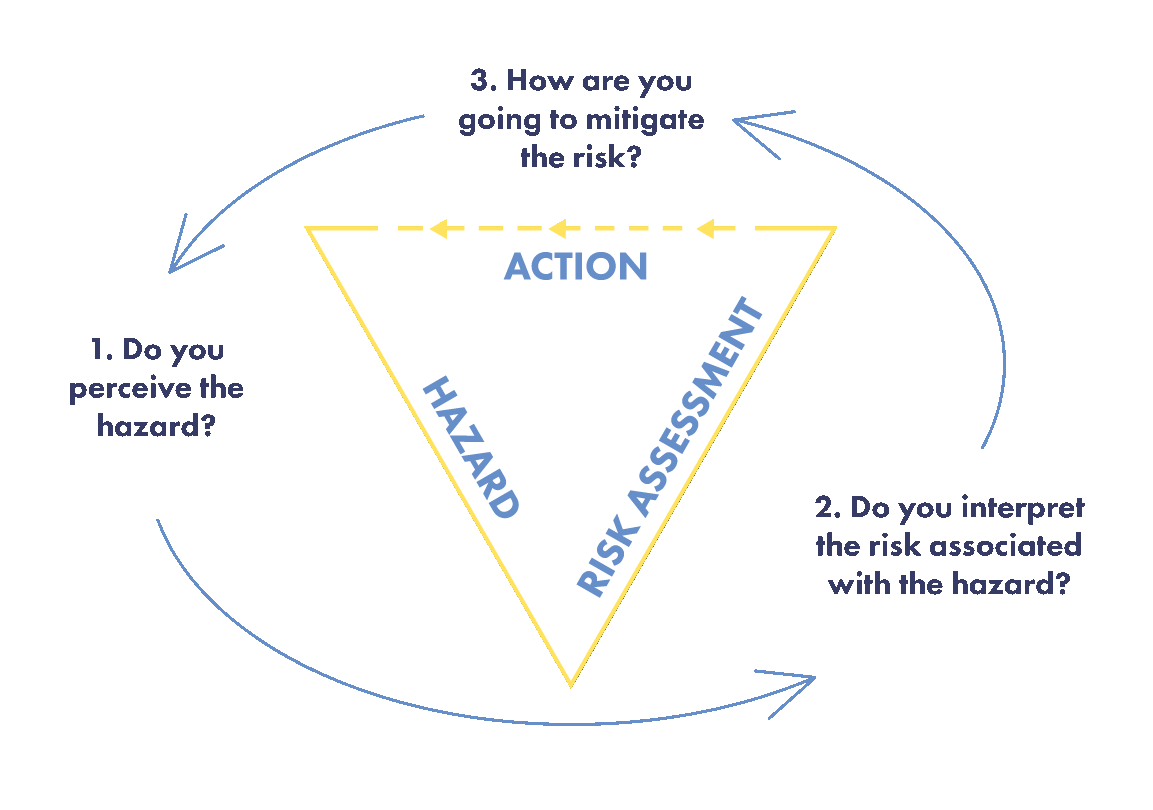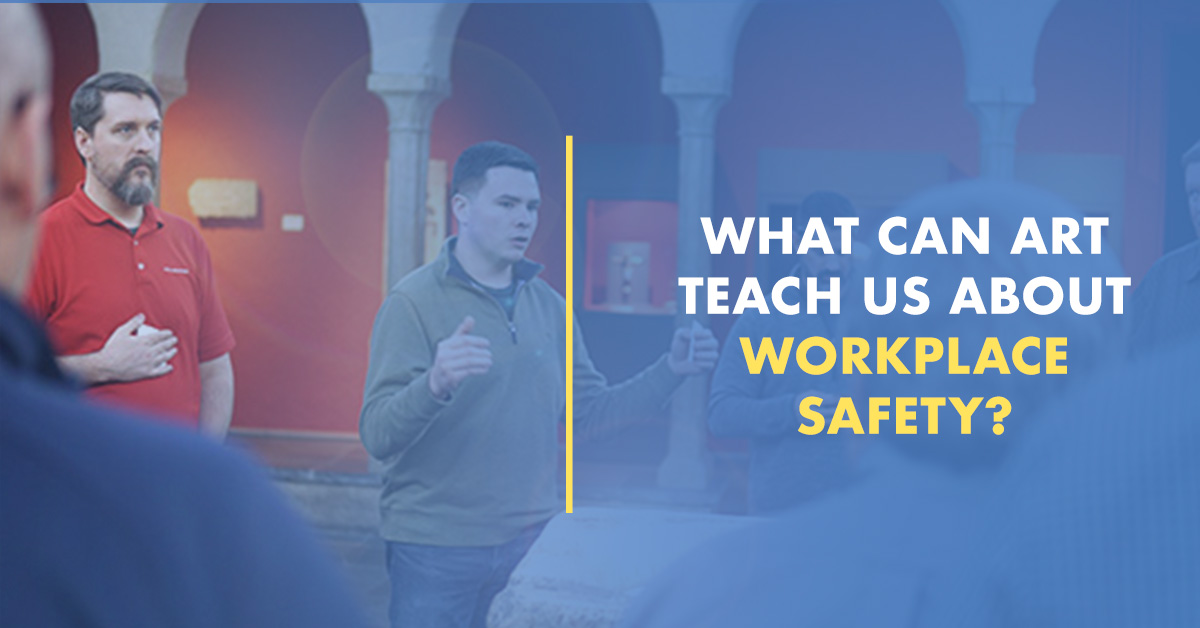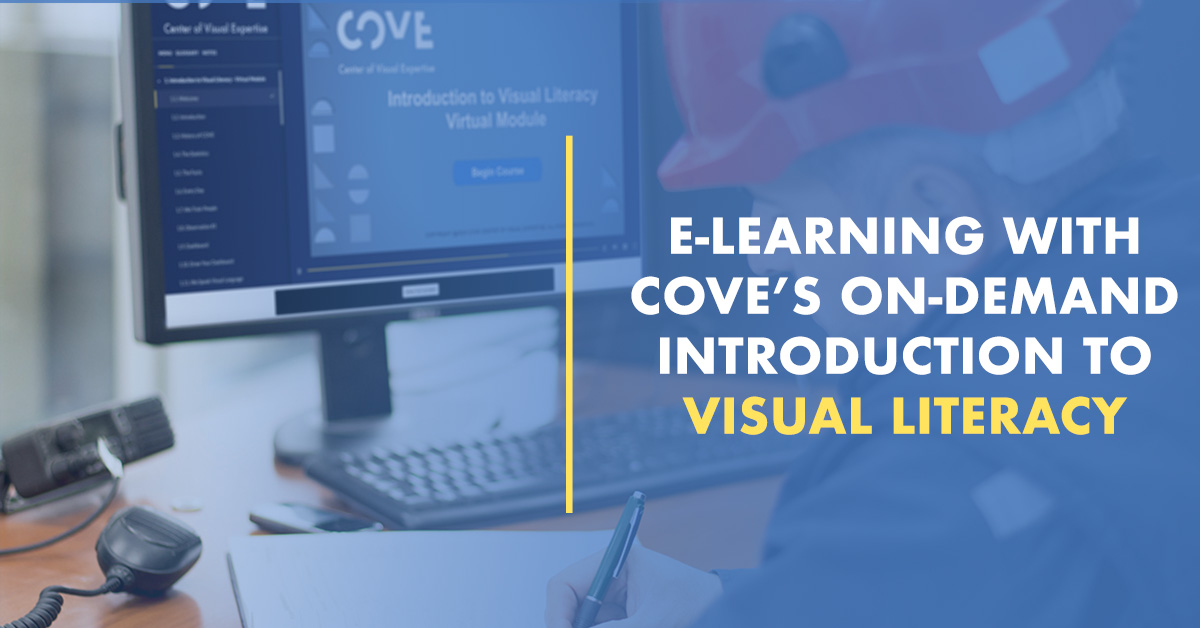Often times the terms Hazard Awareness, Hazard Identification, and Hazard Recognition are utilized interchangeably to essentially mean the same thing. To some safety ‘purists’ (like me), there is a clear and important distinction between the terms. They really are not the same. On the other hand, those distinctions and efforts to explain them can often overshadow what is most important, the key point. So, all you purists, try to set your objections aside so that we can agree on the core issue – which I will label simply as Risk Management.
First Step: Hazard Perception
Whether you call it hazard awareness, hazard identification, hazard recognition or something else – the ‘process’ boils down to three key ‘steps,’ the first being hazard perception.
- Can you, or the worker(s), physically perceive the hazard?
- Can you see it?
- Touch it?
- Hear it?
The ability to see the hazard can be influenced or impacted by a number of things, among them the individual’s visual acuity, color blindness, lighting, ‘camouflaging,’ weather conditions, and many others. While this may seem somewhat basic or fundamental, I think you would agree that if an individual cannot see the hazard, they cannot then deal with it effectively.
Second Step: Risk Assessment
I call the second step risk assessment. Once you have perceived – actually seen – the hazard, do you recognize it as something that poses a safety risk to you or others?
Here’s a simple example to illustrate what I mean. You have seen the pothole in the walkway. But does that pothole represent a risk to you? If you have never seen a pothole before, or had never tripped over a pothole yourself, or had never seen anyone else trip over a pothole – it may not register in your mind as a hazard that represents a risk. Your biases, life experiences, training, etc. all influence how you interpret the risk. Now move from this somewhat silly example to other scenarios, and I think you can understand how important it is.
Third Step: Risk Mitigation
The third, and final ‘step,’ I call risk mitigation. You have:
- physically perceived/seen the hazard
- you have interpreted/assessed the risk that is posed by the hazard
- so now you take steps to avoid, eliminate, mitigate – address – the risk.
In the example above, we’ll assume you did indeed assess the risk properly and decided to step over or step around the pothole – and hopefully took steps to address the risk on a more permanent basis as well by marking the pothole, filling it in, notifying management about the pothole, etc.
Hazard Perception > Risk Assessment > Risk Mitigation = Risk Management
Our understanding of Visual Literacy hinges very strongly on something we call the Art of Seeing Art (Image 1), which is represented by the upside-down triangle below. Beginning on the left side of the triangle, we begin first by ‘reading’ (looking, observing, seeing) art. Moving up the right side of the triangle, we then go through the process of ‘comprehending’ (describing, analyzing, interpreting) art. And finally, as we complete the triangle the process is completed by ‘writing’ (appreciating, taking meaning from, etc.) art.
Image 1
COVE, the Center of Visual Expertise, has ‘translated’ this concept and applied it in a unique way to safety (Image 2). The left side of the triangle asks ‘What do you see?’ The right side then asks “What does it mean?’ And finally, across the top, it poses “What do you do about it?’
Image 2
Hopefully, you can see the parallel between this process and the three-step Risk Management process described above. Therefore, a third triangle could look like this: ‘Do you perceive the hazard?’ ‘Do you interpret the risk associated with the hazard?’ And ‘How are you going to mitigate the risk?’
Image 3
The Visual Literacy concepts, tools, and skills provided through the various experiences and workshops offered by COVE – which can be integrated into your existing safety tools, processes, and systems – are laser-focused on enhancing the individual and organizations’ collective ability to address all three sides of the Risk Management triangle.
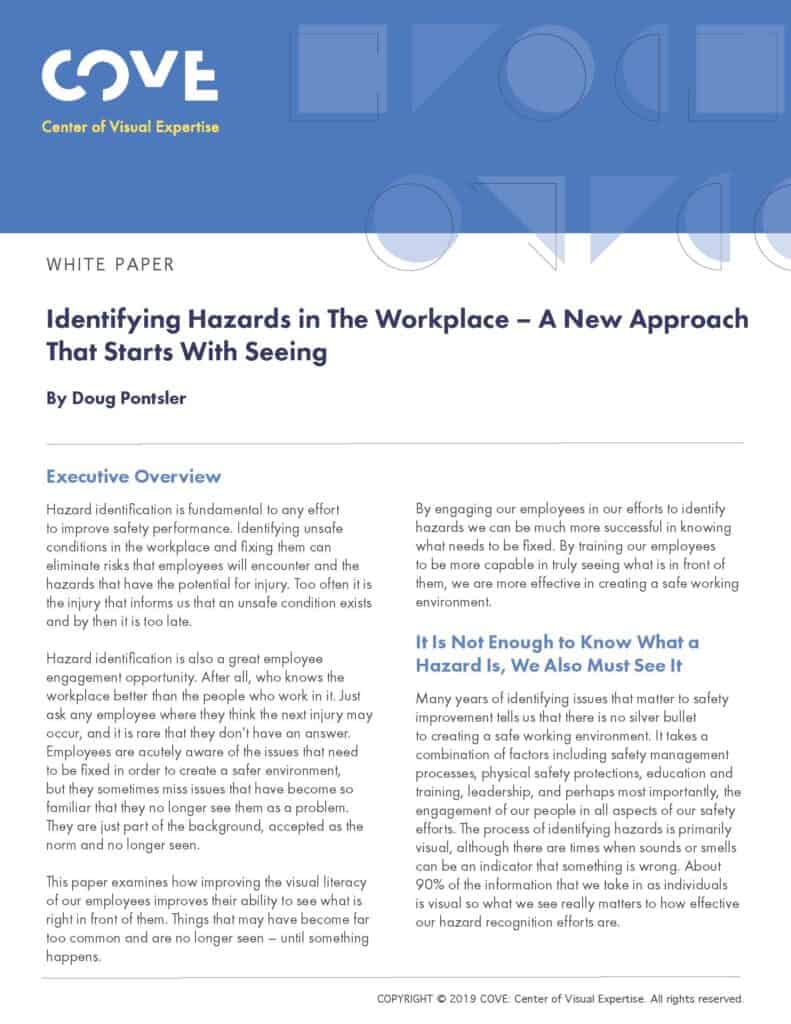
To Learn More About These Triangles And How They Relate To Hazard Management., I encourage you to download the white paper “Identifying Hazards In The Workplace – A New Approach That Starts With Seeing.”
